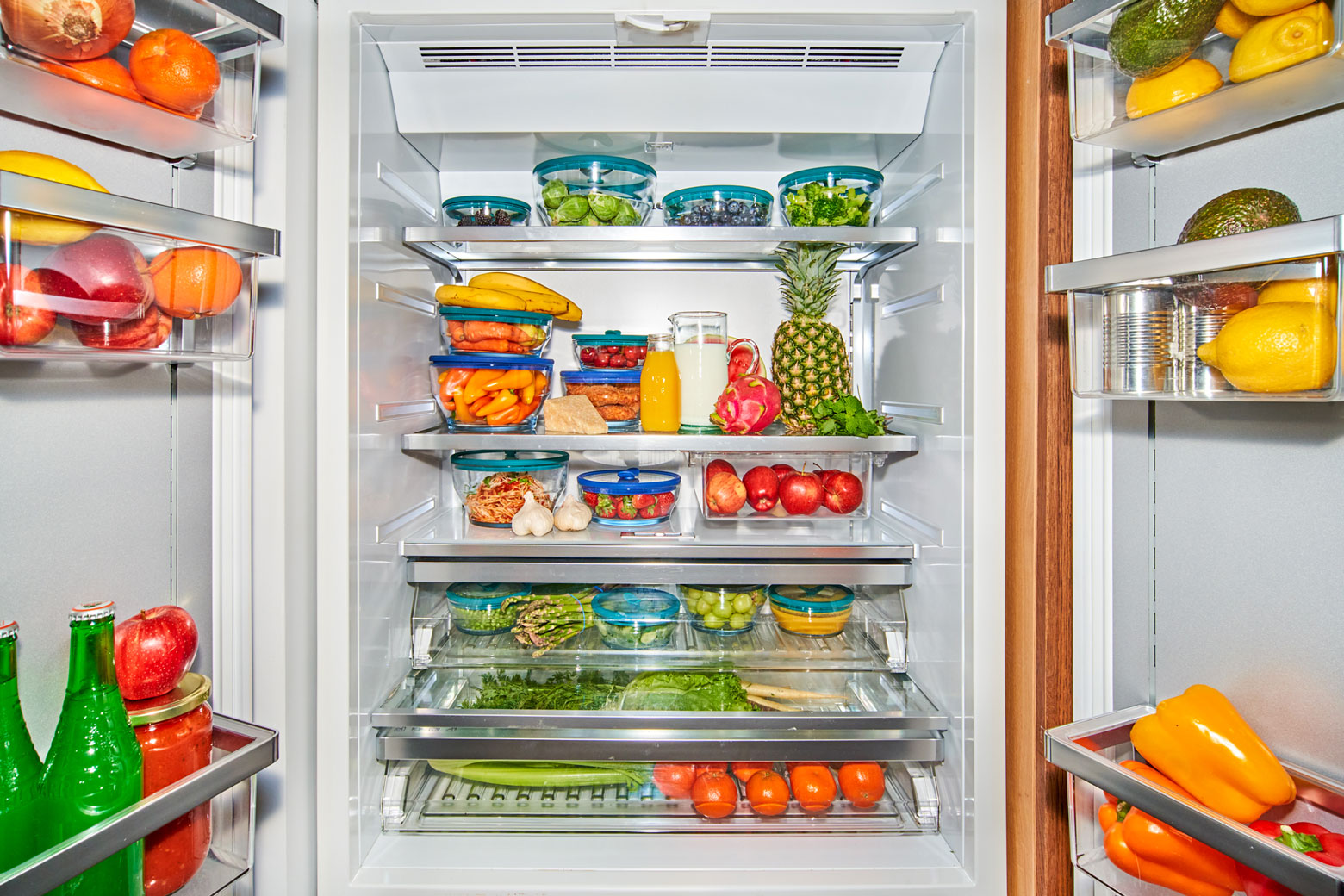Microwaves work by vibrating certain molecules in food — like water — which we experience as heat. Since vegetables are almost 100% water, they absorb microwave energy super efficiently. This means that you can transform your microwave into a super steamer with the right tools. That’s what we designed Anyday to do: effectively trap steam with a tightly-sealed lid, plus a vent that releases pressure to avoid any messy explosions.
Here’s a quick explainer for the basics of cooking different types of vegetables in the microwave.
First, a few rules of thumb
Wash first, but don’t dry
As we said, the water molecules in vegetables heat up and generate steam — but the little bit of water leftover from a quick wash helps vegetables steam up even faster and more evenly.
Start with less time if it’s your first time
If it’s your first time cooking a certain vegetable in the microwave, start with the lower range of time in the one-ingredient recipe. You can always add time, but you can’t reverse the cooking (unless you’ve figured out time travel). The good news is that once you find the perfect cooking time for a specific vegetable, it will be consistent every time.
The smaller you cut your vegetables, the less time it will take to cook
Microwaves can penetrate the first centimeter or two of food. The waves themselves don’t penetrate much further, but the heat generated from the outer edge of the food will transfer into the middle of the food — it just takes a little longer.
Quantity matters
The amount of vegetables you cook in your Anyday dish affects its cook time, but it’s not a 1:1 ratio (double the amount doesn’t mean double the time!). Follow the one-ingredient recipe for a vegetable to get started.

How to Cook Leafy Greens In the Microwave
Any leafy green cooks in a flash in the microwave due to the steam chamber that Anyday creates — the only difference is cook time. Delicate, tender greens like spinach or arugula only take about 30 seconds to wilt beautifully in the microwave; tougher greens like collards and chard will cook in about two minutes. If you’re not sure how long your greens will take to wilt, start with 30-second intervals until they’re cooked to your liking.
Before you throw in your greens, add a bit of oil, some salt, and aromatics like garlic, onion, or ginger into the Anyday dish, and microwave for one minute to infuse more flavor. Then, pack as much of your greens into the Anyday as you can fit, and cook. They will cook down a lot! If you want to cook more greens, simply add more to your already-cooked greens, stir, and microwave them again.
How to Cook Potatoes In the Microwave
Potatoes are like people — they come in many shapes and sizes! A great rule of thumb is that the smaller the size of the potato, the faster it will cook. That includes potatoes that are cut into pieces. For instance, a large potato will cook faster cut into quarters than cut in half. Make sure to flip larger pieces or stir smaller ones half way through the cook time for more even cooking. Here are a few handy guides for cooking regular potatoes, marble potatoes, and sweet potatoes to get you started!
How to Cook Other Root Vegetables In the Microwave
Root vegetables like carrots or parsnips often need a little water to get them steaming in the microwave. It helps keep them tender — they’re so dense and starchy that they might dry out without a bit of extra moisture. Similarly to potatoes, the smaller you cut them, the quicker they’ll cook.

How to Cook Stemmy Greens and Brassicas in the Microwave
One major problem with steaming or blanching stemmy greens like asparagus and brassicas like broccoli is the carryover cooking that results from surrounding the vegetables with a heat source. The wonderful thing about microwave cooking is that when the microwave’s cook time is up, the heat immediately subsides, so you’re left with vegetables that are crunchy and tender rather than limp and mushy. That’s right — no need for a water bath here to have perfectly tender vegetables!
How to Cook Mushrooms in the Microwave
Technically mushrooms aren’t vegetables, but they grow out of the ground and are delicious just like vegetables. One of the great benefits of microwaving mushrooms? You don’t need any olive oil to cook them, unlike when you saute or roast them. Mushrooms are naturally full of water, so they steam beautifully and don’t even need to be covered with the lid when cooking in the microwave. Mushrooms are also easy to cook in the same dish as other ingredients, like in this mushroom risotto or this kimchi tofu and mushroom stew. Here are more mushroom cooking tips.
How to Dress It All Up
- Make a quick herb sauce to spoon on top: Chop up herbs like basil, parsley, mint, or cilantro and mix with minced garlic, a splash of red wine vinegar, and a few tablespoons of olive oil. Mix a spoonful into yogurt for a creamy version!
- Toss with a drizzle of soy sauce and a spoonful of chili oil like Momofuku Chili Crunch for a spicy veggie side.
- For crispy veggies, remove the lid on your Anyday dish and put in a 450-degree oven for a few minutes to brown.
- Mix tahini with a drizzle of olive oil, a splash of water, and a pinch of salt for a creamy vegan sauce.
- Blitz root veggies and aromatics with some vegetable or chicken stock and a touch of cream for an easy soup.
Want to learn how to cook more single ingredients? Check out our one-ingredient recipes for proteins, veggies, and grains!





Share:
It’s Easy, Baby: How to Make Baby Food in the Microwave
The Truth About Metal in the Microwave